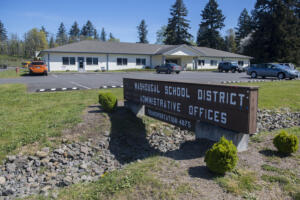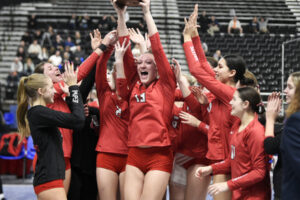“After looking at our schedule, I was able to adjust classes by mere minutes to allow us a 10-minute break between second and third periods,” Boerke said. “The goal is to ensure all students have access to food, and we found that many students who ride the bus don’t get to school in time to get breakfast. Additionally, many teenagers aren’t able to eat first thing when they get up, while 10 a.m. has given them a chance to wake up.”
At the end of the 2015-16 school year, 100 students were regularly using the program.
“That is our most vulnerable population and the least likely to either eat at home or be able to bring a snack,” said Boerke, who began a new position as the district’s human resources director in July. “Seeing the excitement on their faces as they walk away with food is worth the tiny blip of confusion when the program first started. This was a tremendous result and 100 more students are now able to focus on learning. This is one important step to closing the achievement gap between the kids who have resources at home and those who do not.”
Added Short, “We’ve have all heard about the importance of breakfast and how it impacts students’ learning and overall health. Since the beginning of Second Chance Breakfast, schools participating are reporting fewer trips to the nurses office with headaches and stomach aches. Teachers have also noticed a reduction in behavior referrals.”
While some may have the perception that Camas is a wealthy area and kids have plenty to eat, Boerke has seen first-hand this is not the case.
“We also have many families who struggle and need food available to them at school,” she said. “Liberty sponsors a backpack program for about 15 families each week, and other schools in our district do the same. While our district’s overall free or reduced meals rate is 16.2 percent, Liberty’s is 21 percent, and the elementary schools that feed into Liberty range from 20 to 29 percent.”




